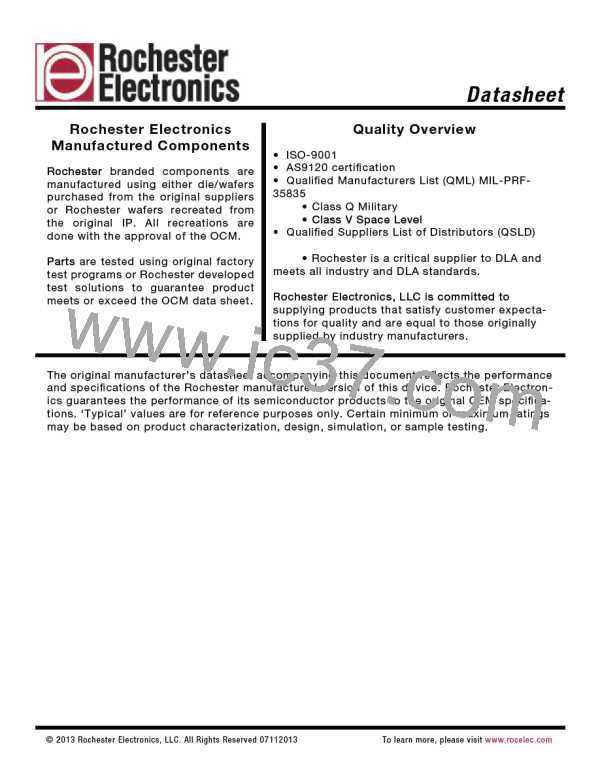AD8510/AD8512/AD8513
A typical value for Rd is 1000 MΩ. Because Rd >> R2, the
circuit behavior is not impacted by the effect of the junction
resistance. The maximum signal bandwidth is
I-V CONVERSION APPLICATIONS
Photodiode Circuits
Common applications for I-V conversion include photodiode
circuits where the amplifier is used to convert a current emitted
by a diode placed at the positive input terminal into an output
voltage.
ft
fMAX
=
2πR2Ct
where ft is the unity gain frequency of the amplifier.
The AD8510/AD8512/AD8513’s low input bias current, wide
bandwidth, and low noise make them each an excellent choice
for various photodiode applications, including fax machines,
fiber optic controls, motion sensors, and bar code readers.
Cf can be calculated by
Ct
Cf =
2πR2 ft
The circuit shown in Figure 53 uses a silicon diode with zero
bias voltage. This is known as a photovoltaic mode; this
configuration limits the overall noise and is suitable for
instrumentation applications.
where ft is the unity gain frequency of the op amp, and it achieves
a phase margin, φM, of approximately 45°.
A higher phase margin can be obtained by increasing the value
of Cf. Setting Cf to twice the previous value yields approximately
φM = 65° and a maximal flat frequency response, but it reduces the
maximum signal bandwidth by 50%.
Cf
R2
Using the previous parameters with a Cf ≈ 1 pF, the signal
bandwidth is approximately 2.6 MHz.
VEE
Signal Transmission Applications
4
2
One popular signal transmission method uses pulse-width
modulation. High data rates may require a fast comparator
rather than an op amp. However, the need for sharp, undistorted
signals may favor using a linear amplifier.
6
AD8510
3
Rd
Ct
7
VCC
The AD8510/AD8512/AD8513 make excellent voltage
comparators. In addition to a high slew rate, the AD8510/
AD8512/AD8513 have a very fast saturation recovery time. In
the absence of feedback, the amplifiers are in open-loop mode
(very high gain). In this mode of operation, they spend much of
their time in saturation.
Figure 53. Equivalent Preamplifier Photodiode Circuit
A larger signal bandwidth can be attained at the expense of
additional output noise. The total input capacitance (Ct)
consists of the sum of the diode capacitance (typically 3 pF to
4 pF) and the amplifier’s input capacitance (12 pF), which
includes external parasitic capacitance. Ct creates a pole in the
frequency response that can lead to an unstable system. To
ensure stability and optimize the bandwidth of the signal, a
capacitor is placed in the feedback loop of the circuit shown in
Figure 53. It creates a zero and yields a bandwidth whose corner
frequency is 1/(2π(R2Cf)).
The circuit shown in Figure 54 was used to compare two signals
of different frequencies, namely a 100 Hz sine wave and a 1 kHz
triangular wave. Figure 55 shows a scope plot of the resulting
output waveforms. A pull-up resistor (typically 5 kΩ) can be
connected from the output to VCC if the output voltage needs to
reach the positive rail. The trade-off is that power consumption
is higher.
The value of R2 can be determined by the ratio
+15V
V/ID
where:
3
7
6
V is the desired output voltage of the op amp.
V
OUT
ID is the diode current.
2
4
V1
For example, if ID is 100 μA and a 10 V output voltage is desired,
R2 should be 100 kΩ. Rd (see Figure 53) is a junction resistance
that drops typically by a factor of 2 for every 10°C increase in
temperature.
–15V
V2
Figure 54. Pulse-Width Modulator
Rev. I | Page 17 of 20

 ROCHESTER [ Rochester Electronics ]
ROCHESTER [ Rochester Electronics ]